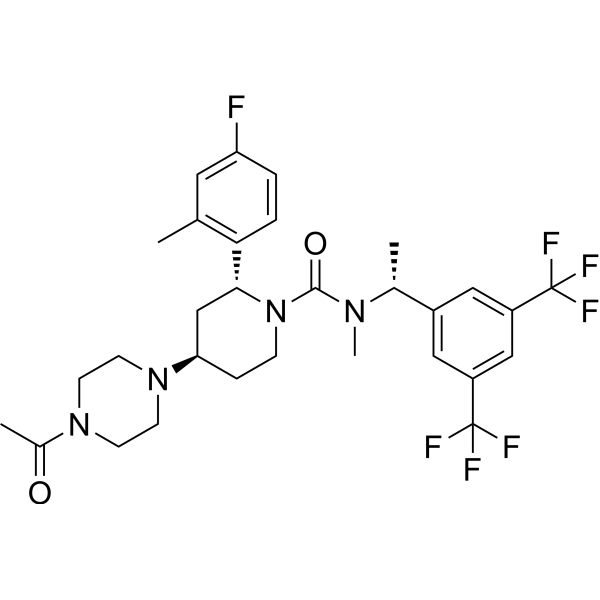Signaling Pathways
The antibody-drug conjugate (ADC), a humanized or human monoclonal antibody conjugated with highly cytotoxic small molecules (payloads) through chemical linkers, is a novel therapeutic format and has great potential to make a paradigm shift in cancer chemotherapy. The three components of the ADC together give rise to a powerful oncolytic agent capable of delivering normally intolerable cytotoxins directly to cancer cells, which then internalize and release the cell-destroying drugs. At present, two ADCs, Adcetris and Kadcyla, have received regulatory approval with >40 others in clinical development.
ADCs are administered intravenously in order to prevent the mAb from being destroyed by gastric acids and proteolytic enzymes. The mAb component of the ADC enables it to circulate in the bloodstream until it finds and binds to tumor-specific cell surface antigens present on target cancer cells. Linker chemistry is an important determinant of the safety, specificity, potency and activity of ADCs. Linkers are designed to be stable in the blood stream (to conform to the increased circulation time of mAbs) and labile at the cancer site to allow rapid release of the cytotoxic drug. First generation ADCs made use of early cytotoxins such as the anthracycline, doxorubicin or the anti-metabolite/antifolate agent, methotrexate. Current cytotoxins have far greater potency and can be divided into three main groups: auristatins, maytansines and calicheamicins.
The development of site-specific conjugation methodologies for constructing homogeneous ADCs is an especially promising path to improving ADC design, which will open the way for novel cancer therapeutics.
References:
[1] Tsuchikama K, et al. Protein Cell. 2016 Oct 14. DOI:10.1007/s13238-016-0323-0.
[2] Peters C, et al. Biosci Rep. 2015 Jun 12;35(4). pii: e00225. doi: 10.1042/BSR20150089.
Ziele für Signaling Pathways
- Proteases(29)
- Apoptosis(824)
- Chromatin/Epigenetics(15)
- Metabolism(336)
- MAPK Signaling(26)
- Tyrosine Kinase(73)
- DNA Damage/DNA Repair(49)
- PI3K/Akt/mTOR Signaling(38)
- Microbiology & Virology(42)
- Cell Cycle/Checkpoint(168)
- Ubiquitination/ Proteasome(24)
- JAK/STAT Signaling(10)
- TGF-β / Smad Signaling(21)
- Angiogenesis(59)
- GPCR/G protein(3)
- Stem Cell(19)
- Membrane Transporter/Ion Channel(161)
- Cancer Biology(366)
- Endocrinology and Hormones(152)
- Neuroscience(367)
- Obesity, Appetite Control & Diabetes(17)
- Peptide Inhibitors and Substrate(2)
- Other Signal Transduction(156)
- Immunology/Inflammation(934)
- Cardiovascular(98)
- Vitamin D Related(0)
- Antibody-drug Conjugate/ADC Related(0)
- PROTAC(212)
- Ox Stress Reagents(24)
- Others(4010)
- Antiparasitics(6)
- Toxins(62)
Produkte für Signaling Pathways
- Bestell-Nr. Artikelname Informationen
-
GC66692
(+)-Biotin-SLC
(+)-Biotin-SLC ist ein Alkylketten-basierter PROTAC-Linker, der bei der Synthese von PROTACs verwendet werden kann.
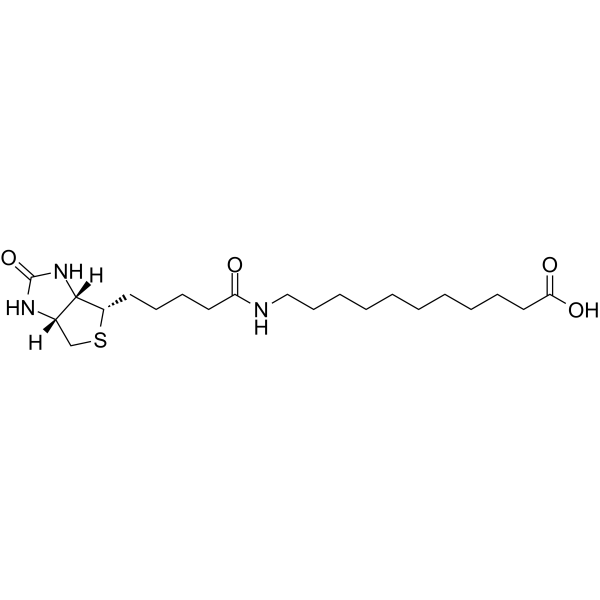
-
GN10605
(+)-Catechin hydrate

-
GC63999
(+)-Coclaurine hydrochloride
(+)-Coclaurin ((+)-(R)-Coclaurin)-Hydrochlorid, Benzyltetrahydroisochinolin-Alkaloid, isoliert aus einer Vielzahl pflanzlicher Quellen.
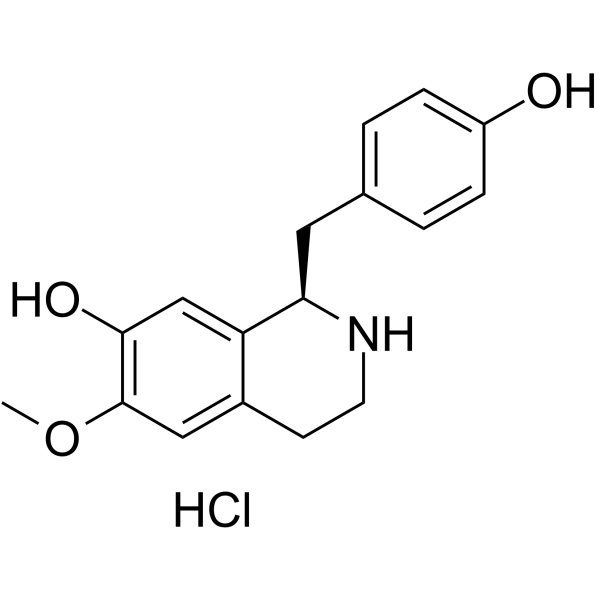
-
GN10654
(+)-Corynoline
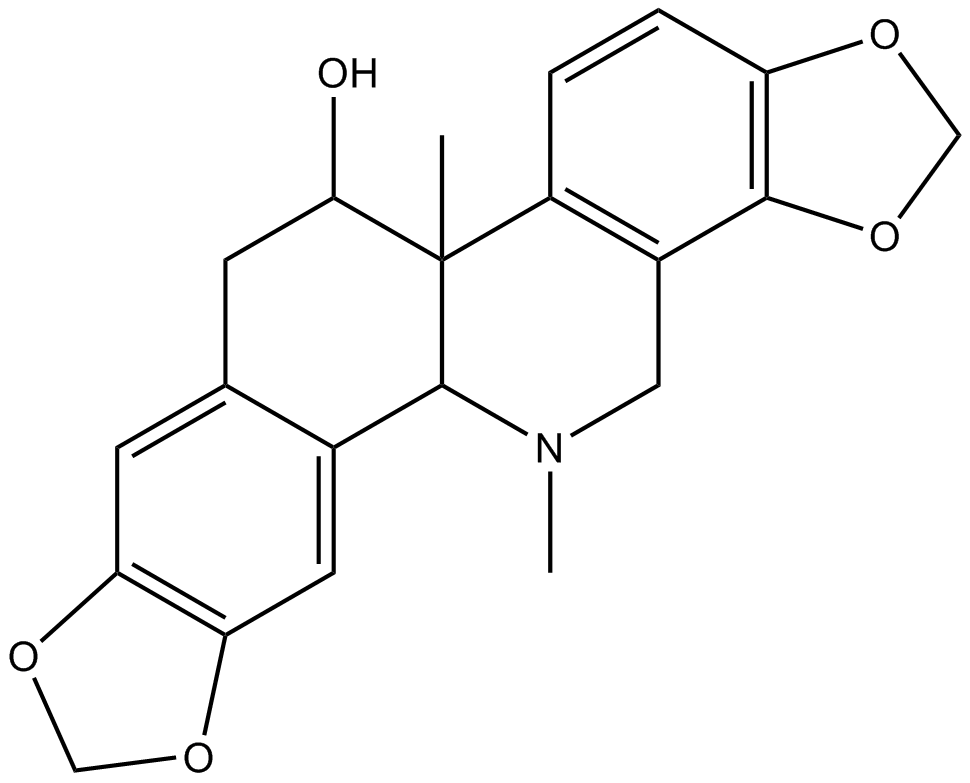
-
GC61765
(+)-Isomenthone
(+)-Isomenthon ist ein aus Ziziphora clinopodioides Lam isoliertes Isomenthon.

-
GC64207
(+)-JNJ-A07
(+)-JNJ-A07 ist ein hochwirksamer, oral aktiver Pan-Serotyp-Dengue-Virus-Inhibitor, der auf die NS3-NS4B-Interaktion abzielt.
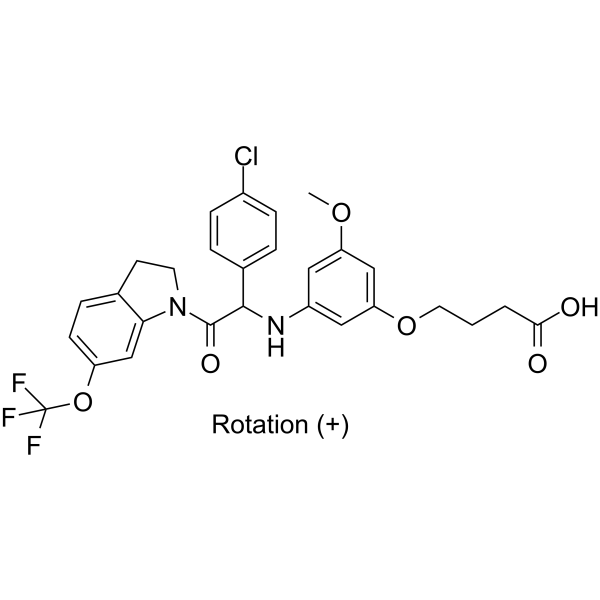
-
GC61595
(+)-JQ-1-aldehyde
(+)-JQ-1-Aldehyd ist die Aldehydform von (+)-JQ1. (+)-JQ-1-Aldehyd kann als Vorstufe zur Synthese von PROTACs verwendet werden, die auf BET-BromodomÄnen abzielen.

-
GC61647
(+)-Longifolene
(+)-Longifolen ist ein Sesquiterpenoid und ein Metabolit bei Kaninchen.
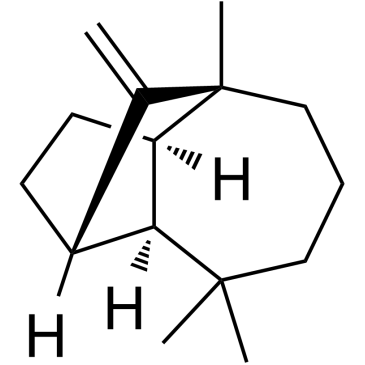
-
GC67931
(+)-Medioresinol
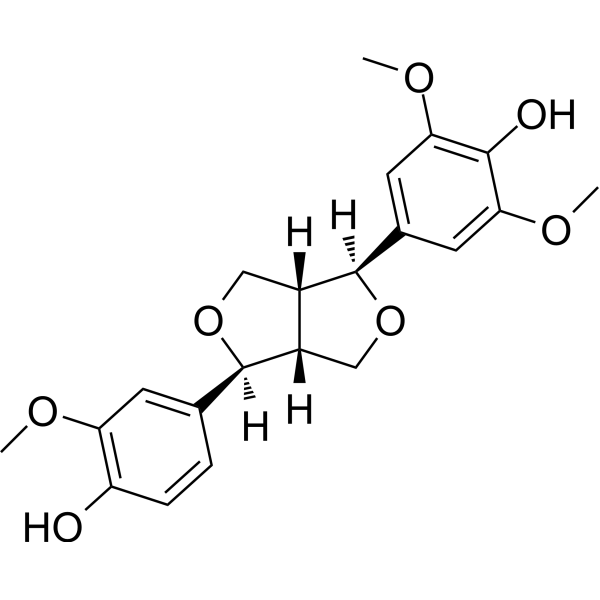
-
GC16616
(+)-MK 801
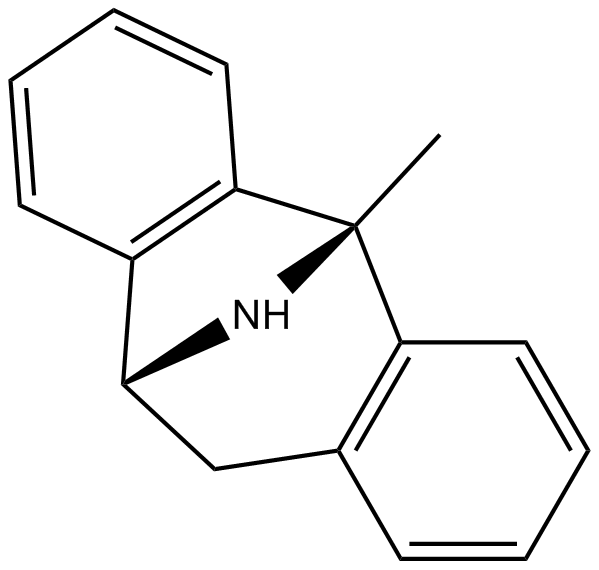
-
GC68210
(+)-Norfenfluramine

-
GC63969
(+)-Schisandrin B
(+)-Schisandrin B ist ein Enantiomer von Schisandrin B.

-
GC48783
(+)-Sorokinianin
(+)-Sorokinianin ist ein Phytotoxin aus einem Isolat von Bipolaris sorokiniana.

-
GC69720
(+)SHIN2
(+)SHIN2 ist ein Hemmstoff der Serinhydroxymethyltransferase (SHMT) und sein Ziel im Körper kann mit 13C-Serin verfolgt werden. (+)SHIN2 erhöht die Überlebensrate von Mäusen, die an primärer akuter T-Zell-Leukämie (T-ALL), die durch Notch1 angetrieben wird, leiden, und wirkt synergistisch mit Methotrexat zusammen.

-
GC49502
(-)-β-Sesquiphellandrene
A sesquiterpene with antiviral and anticancer activities

-
GC61646
(-)-Camphoric acid
(-)-KampfersÄure ist das weniger aktive Enantiomer der KampfersÄure.

-
GC48635
(-)-Cryptopleurine
An alkaloid with diverse biological activities

-
GC63940
(-)-Denudatin B
(-)-Denudatin B ist ein Thrombozytenaggregationshemmer.

-
GC14049
(-)-Epigallocatechin gallate (EGCG)
Ein Phenol mit vielfältigen biologischen Aktivitäten.
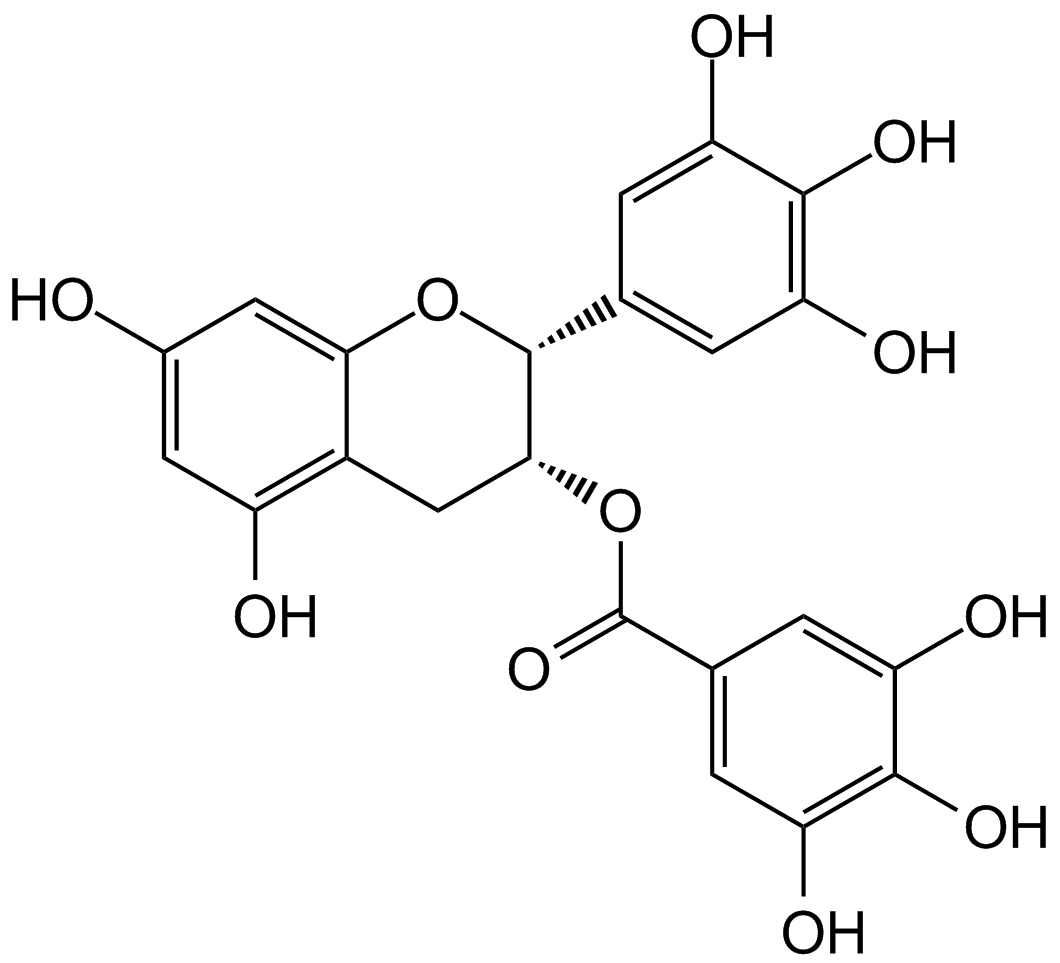
-
GC63570
(-)-Hydroxycitric acid lactone
(-)-HydroxyzitronensÄurelacton (Garcinialacton) ist ein Mittel gegen Fettleibigkeit und ein beliebtes NahrungsergÄnzungsmittel zur Gewichtsabnahme.
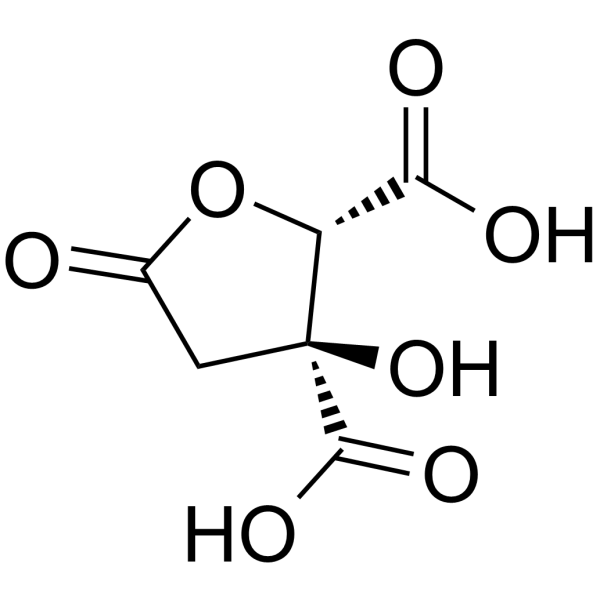
-
GC13822
(-)-JQ1
A selective inhibitor of BET bromodomains
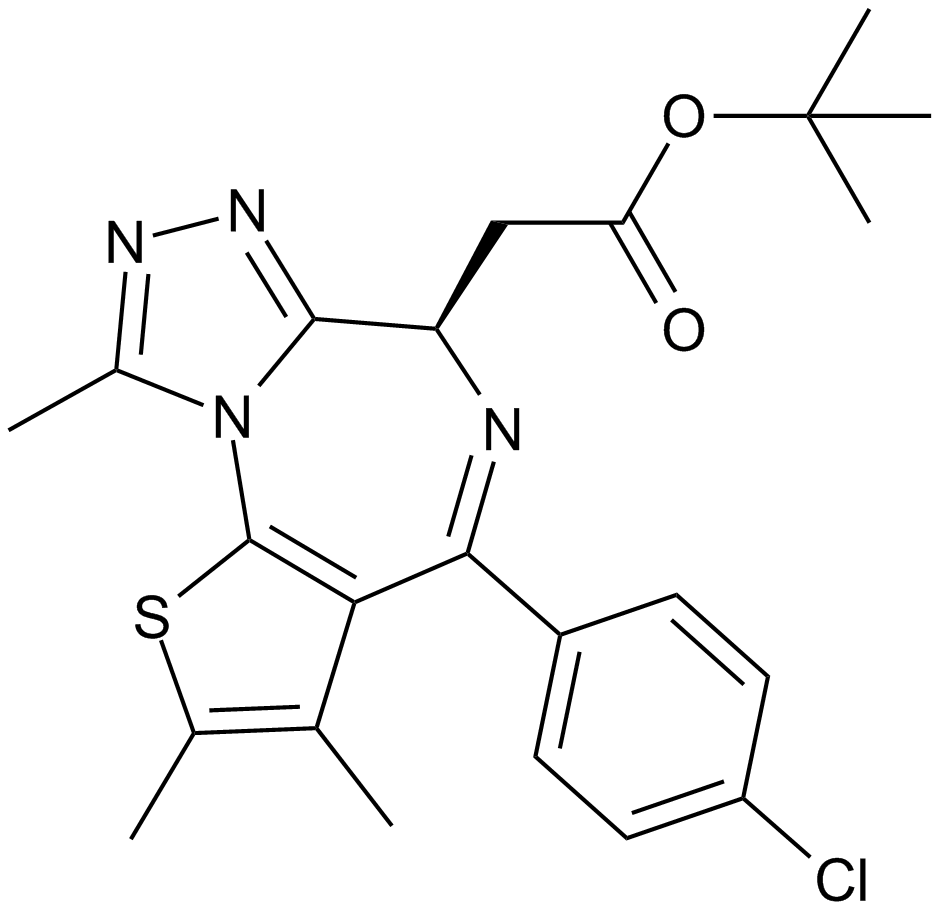
-
GN10445
(-)-pareruptorin A
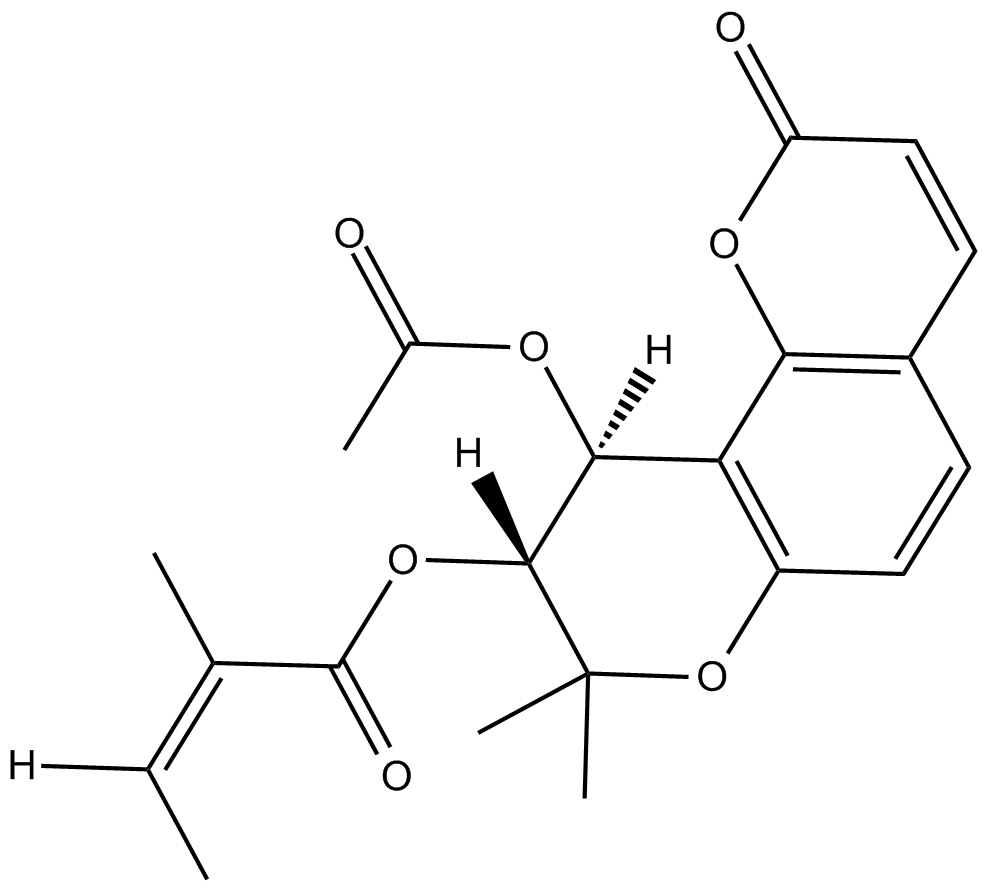
-
GC48551
(-)-Physostigmine (salicylate)
(-)-Physostigmin (Salicylat) (Eserinsalicylat) ist ein reversibler Acetylcholinesterase (AChE)-Hemmer.

-
GC62728
(1E)-CFI-400437 dihydrochloride
(1E)-CFI-400437-Dihydrochlorid ist ein potenter PLK4-Inhibitor (IC50 = 0,6 nM) und selektiv gegenÜber anderen Mitgliedern der PLK-Familie (> 10 μM). (1E)-CFI-400437-Dihydrochlorid hemmt Aurora A, Aurora B, KDR und FLT-3 mit IC50-Werten von 0,37, 0,21, 0,48 bzw. 0,18 μM. Antiproliferative AktivitÄt.

-
GC62729
(1R)-α-Pinene
(1R)-α-Pinen ist ein flÜchtiges Monoterpen mit antimikrobieller Wirkung.
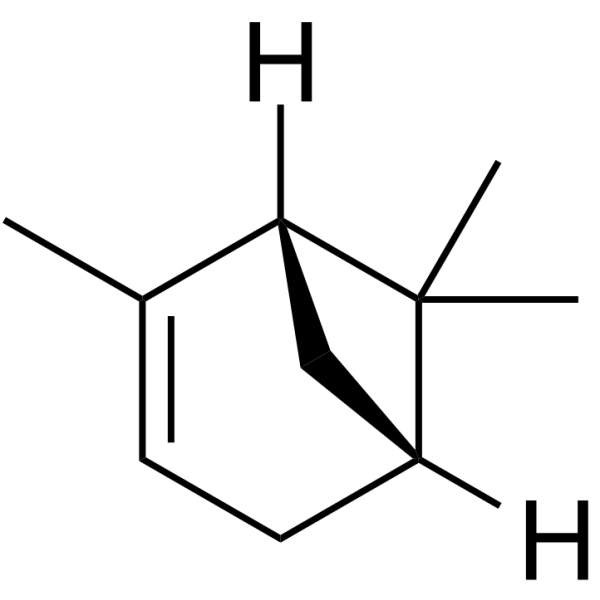
-
GC65363
(1R)-Tenofovir amibufenamide
(1R)-Tenofovir-Amibufenamid ((1R)-HS-10234) ist das Isomer von Tenofovir-Amibufenamid und ein oral wirksames antivirales Mittel.
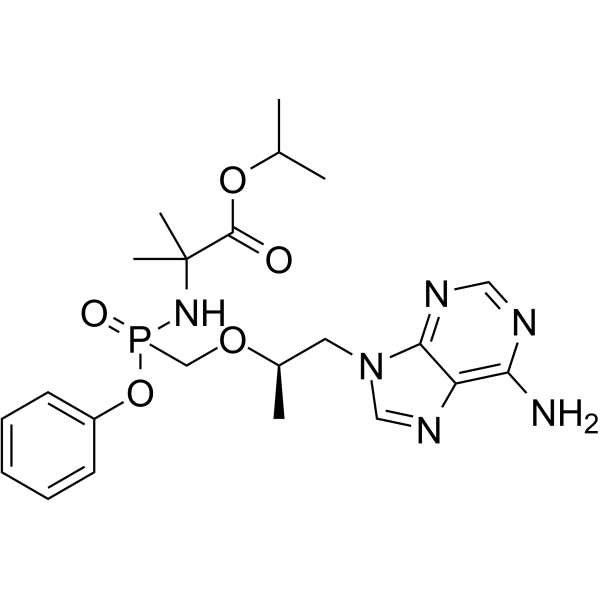
-
GC64062
(1R,2R)-ML-SI3
(1R,2R)-ML-SI3 ist ein starker Inhibitor von TRPML1 und TRPML2 (IC50-Werte von 1,6 und 2,3 μM) und ein schwacher Inhibitor (IC50 12,5 μM) von TRPML3.
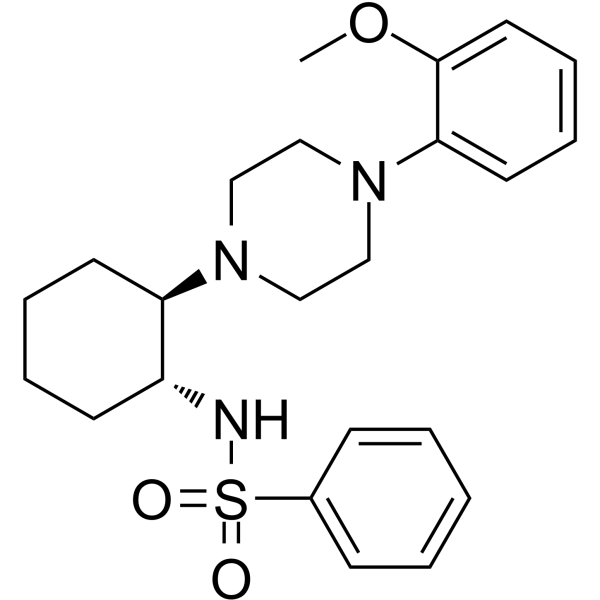
-
GC70081
(1R,2R)-U-50488 hydrochloride
(1R,2R)-U-50488 Hydrochlorid ist die absolute Konfiguration von (±)-U-50488 Hydrochlorid. (±)-U-50488 Hydrochlorid ist ein Agonist des κ-Opioidrezeptors.
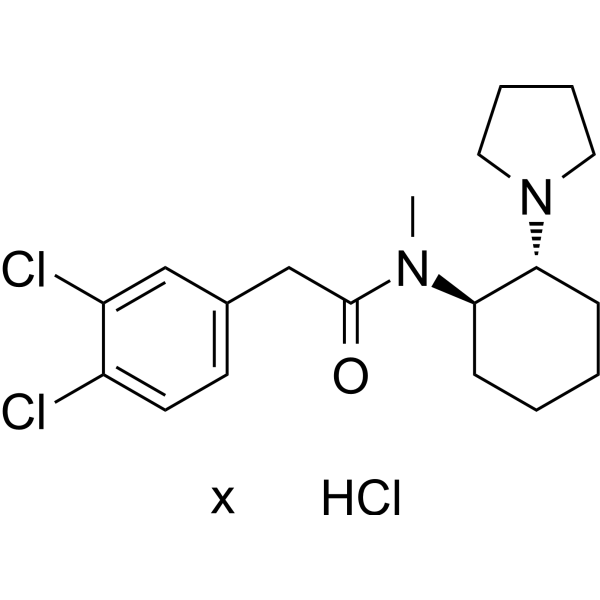
-
GC67880
(1R,2S)-Xeruborbactam disodium

-
GC62730
(1S)-Calcitriol
(1S)-Calcitriol (1α,25-Dihydroxy-3-Epi-Vitamin-D3) ist ein natÜrlicher Metabolit von 1α,25-Dihydroxyvitamin D3 (1α,25(OH)2D3).
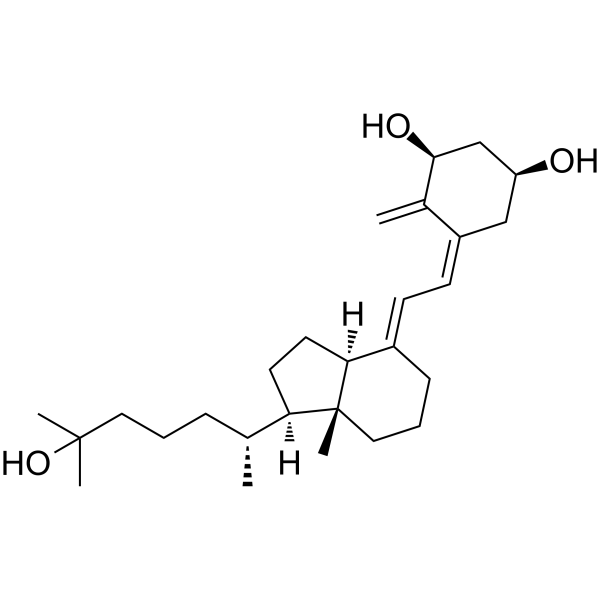
-
GC65547
(1S,2R)-Alicapistat
(1S,2R)-Alicapistat ((1S,2R)-ABT-957) ist ein oral aktiver selektiver Inhibitor der humanen Calpaine 1 und 2 fÜr die potenzielle Anwendung bei der Alzheimer-Krankheit (AD).

-
GC62193
(1S,2S)-Bortezomib
(1S,2S)-Bortezomib ist ein Enantiomer von Bortezomib. Bortezomib ist ein zellgÄngiger, reversibler und selektiver Proteasom-Inhibitor und hemmt wirksam das 20S-Proteasom (Ki von 0,6 nM), indem es auf einen Threoninrest abzielt. Bortezomib unterbricht den Zellzyklus, induziert Apoptose und hemmt NF-κB. Bortezomib ist ein Krebsmittel und der erste therapeutische Proteasom-Inhibitor, der beim Menschen eingesetzt wird.
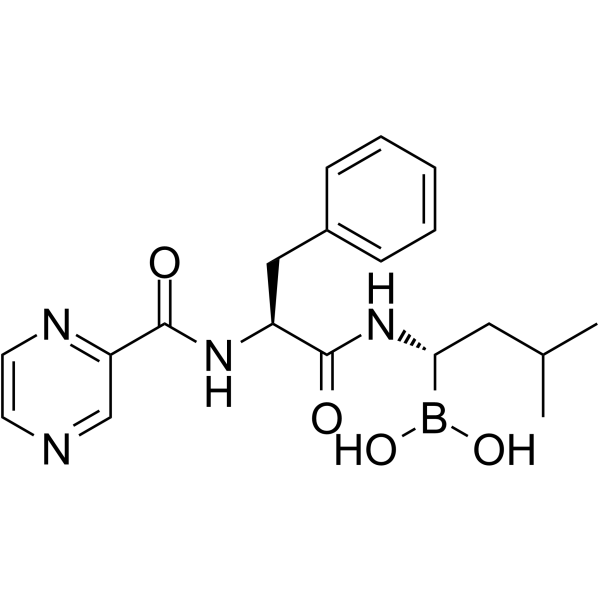
-
GC65885
(1S,3R)-GNE-502
(1S,3R)-GNE-502 (Verbindung 179) ist ein starkes ERα Abbauer mit einem EC50-Wert von 13 nM gegen ERα in MCF7 HCS. (1S,3R)-GNE-502 kann zur Erforschung von Krebs im Zusammenhang mit Östrogenrezeptoren verwendet werden.

-
GC68525
(2α,3β,4α)-2,3,19-Trihydroxyurs-12-ene-23,28-dioic acid
(2α,3β,4α)-2,3,19-Trihydroxyurs-12-en-23,28-dioinsäure ist ein Saponin, das aus Rubus ellipticus var. obcordatus isoliert werden kann. Es hemmt α-Glucosidase mit einem IC50 von 1,68 mM.
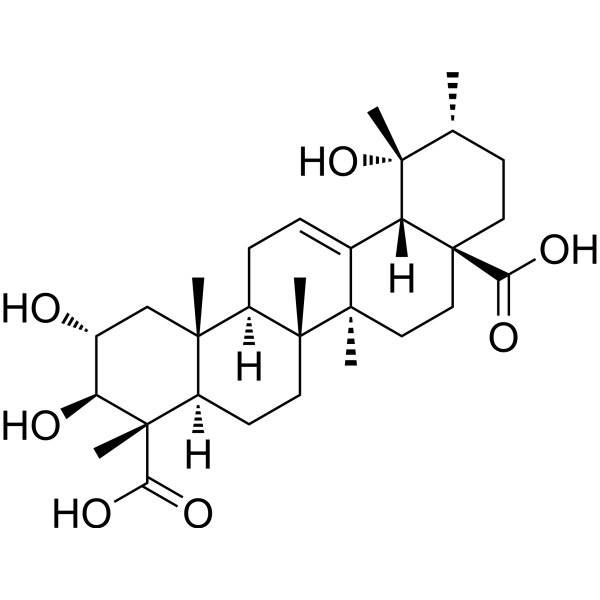
-
GC63900
(2-pyridyldithio)-PEG1-hydrazine
(2-Pyridyldithio)-PEG1-Hydrazin ist ein spaltbarer 1-Einheit-PEG-ADC-Linker, der bei der Synthese von AntikÖrper-Wirkstoff-Konjugaten (ADCs) verwendet wird.
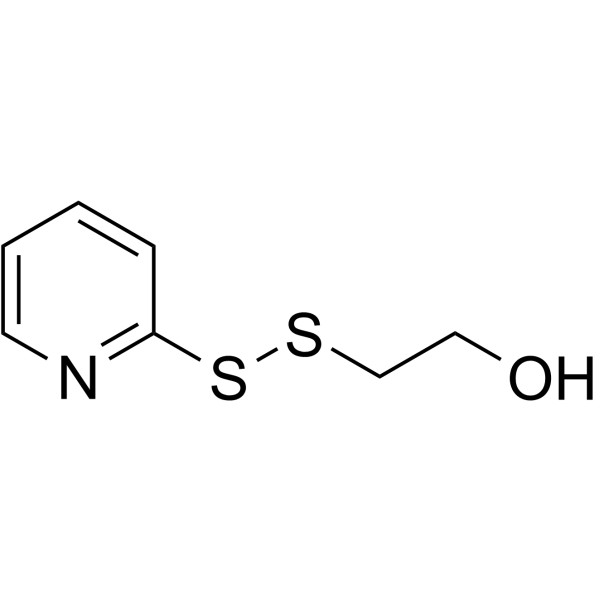
-
GC65777
(2-Pyridyldithio)-PEG2-Boc
(2-Pyridyldithio)-PEG2-Boc ist ein PEG-basierter PROTAC-Linker, der bei der Synthese von PROTACs verwendet werden kann.
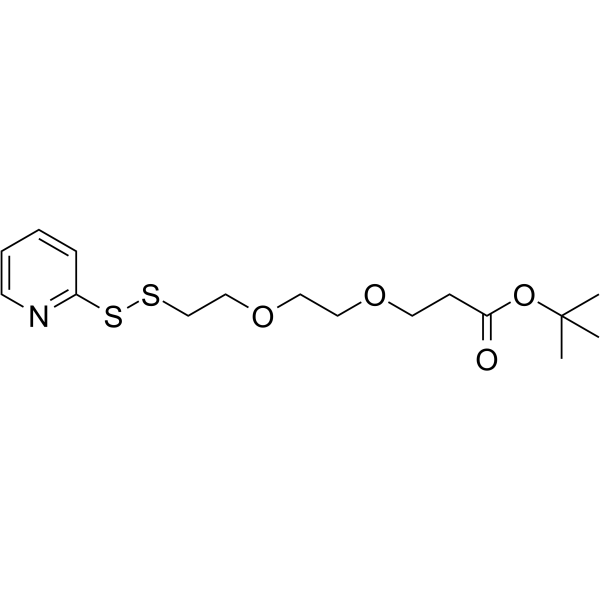
-
GC65623
(2-pyridyldithio)-PEG4 acid
(2-Pyridyldithio)-PEG4-SÄure ist ein spaltbarer PEG-ADC-Linker mit 4 Einheiten, der bei der Synthese von AntikÖrper-Wirkstoff-Konjugaten (ADCs) verwendet wird.
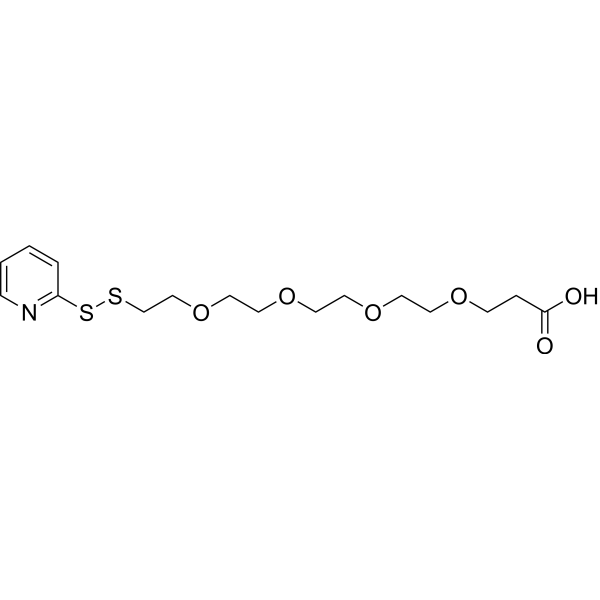
-
GC65703
(2-Pyridyldithio)-PEG4-alcohol
(2-Pyridyldithio)-PEG4-Alkohol ist ein PEG-basierter PROTAC-Linker, der bei der Synthese von PROTACs verwendet werden kann.
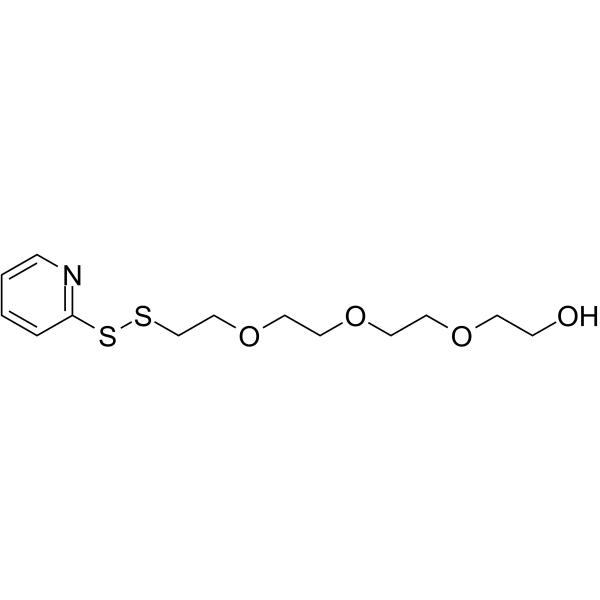
-
GC65337
(2-Pyridyldithio)-PEG4-propargyl
(2-Pyridyldithio)-PEG4-propargyl ist ein PEG-basierter PROTAC-Linker, der bei der Synthese von PROTACs verwendet werden kann.

-
GC11717
(24S)-MC 976

-
GC68509
(25R)-12α-Hydroxyspirost-4-en-3-one
(25R)-12α-Hydroxyspirost-4-en-3-one ist ein sekundäres Stoffwechselprodukt, das durch die Wirkung von Nocardia globerula auf Hecogenin entsteht.
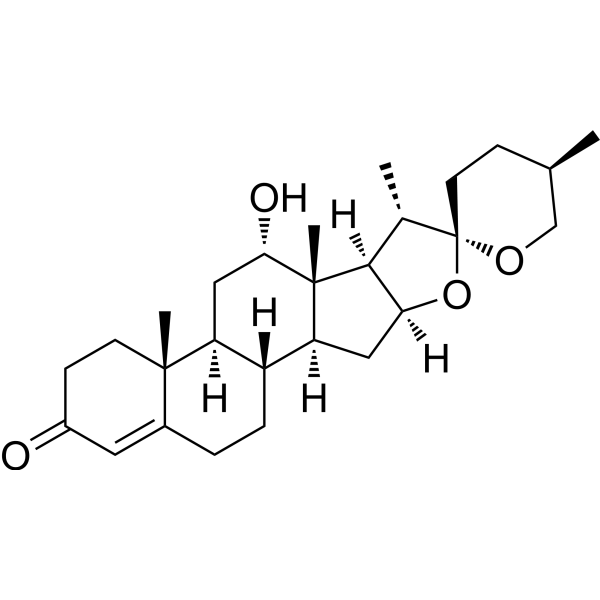
-
GC62731
(2R,3R)-Butane-2,3-diol
(2R,3R)-Butan-2,3-diol ist ein kÖrpereigener Metabolit.

-
GC68522
(2R,3S)-Brassinazole
Brassinazol (0,5, 1, 5 μM) führt zu signifikanten Verformungen der Keimlinge, die ähnlich wie BR-Defektmutanten aussehen. Brassinazol verursacht Zwergwuchs bei Wassersellerie und verändert das Blattmuster. Zum Beispiel haben Arabidopsis-Mutanten mit BR-Defekten typischerweise nach unten gekräuselte Blätter und eine tiefgrüne Erscheinung. Allerdings kann die Anwendung von 10 nM BR den Zwergwuchs umkehren.
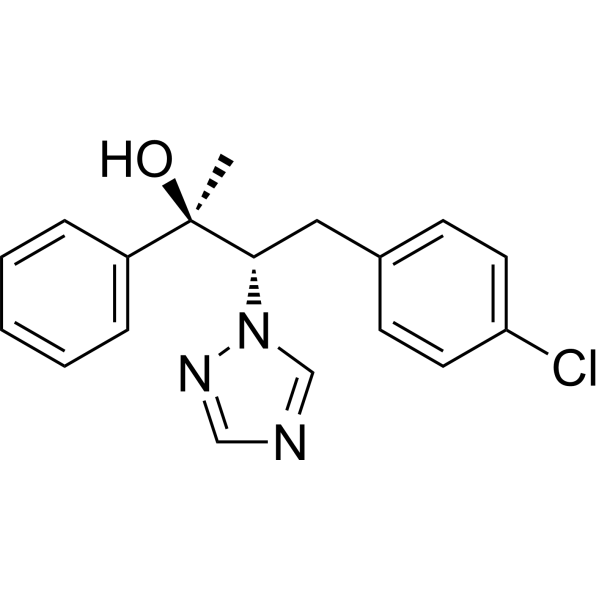
-
GC62130
(2R,5S)-Ritlecitinib
(2R,5S)-Ritlecitinib ((2R,5S)-PF-06651600) ist ein potenter und selektiver JAK3-Inhibitor (IC50=144,8 nM), extrahiert aus Patent US20150158864A1, Beispiel 68.
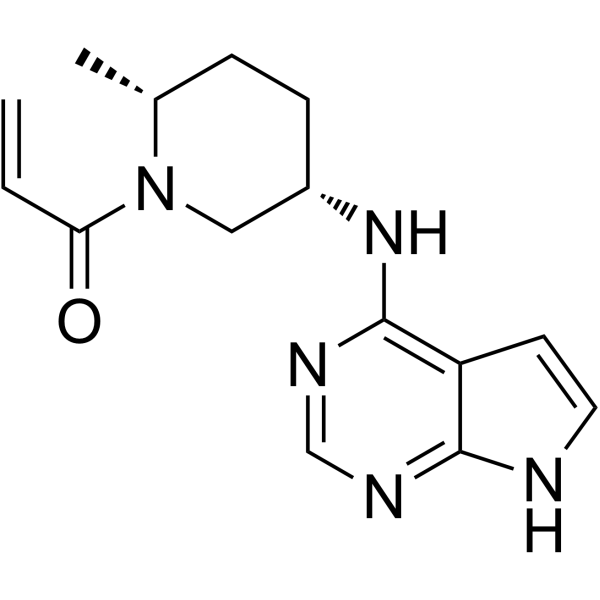
-
GC68524
(2S)-N3-IsoSer (DCHA)
(2S)-N3-IsoSer DCHA ist ein Click-Chemie-Reagenz, das eine chirale α-Hydroxypropionsäure mit Azidgruppe enthält.

-
GC68523
(2S,3R)-Brassinazole
(2S,3R)-Brassinazole ist ein Isomer von Brassinazol und gehört zur Gruppe der Brassinosteroid-Inhibitoren. Es hemmt die Biosynthese von Brassinosteroiden, einer Klasse von Pflanzensteroiden, indem es den Oxidationsprozess von 6-Oxo-Campestanol zu Teasteron blockiert. (2S,3R)-Brassinazole ist möglicherweise die aktivste Form des Brassinazols.

-
GC64260
(2S,5S)-Censavudine
(2S,5S)-Censavudin ((2S,5S)-OBP-601) ist das (2S,5S)-Enantiomer von Censavudin.
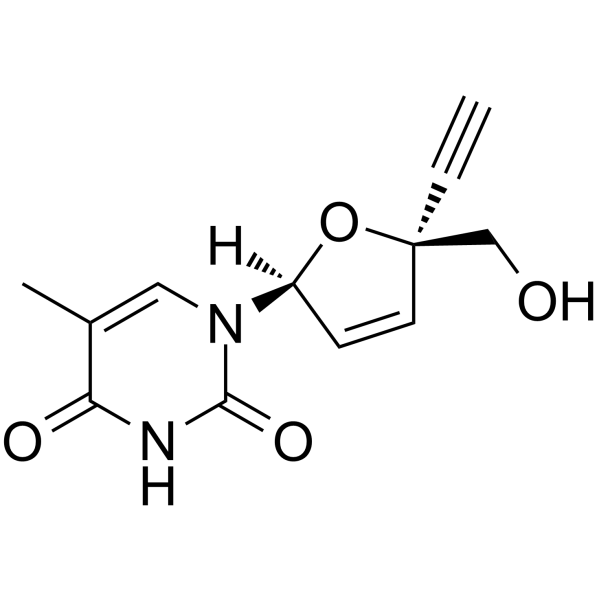
-
GC63524
(32-Carbonyl)-RMC-5552
(32-Carbonyl)-RMC-5552 ist ein potenter mTOR-Inhibitor. (32-Carbonyl)-RMC-5552 hemmt die Phosphorylierung von mTORC1- und mTORC2-Substraten (p-P70S6K-(T389), p-4E-BP1-(T37/36) UND p-AKT1/2/3-(S473)). pIC50s von > 9, > 9 bzw. zwischen 8 und 9 (Patent WO2019212990A1, Beispiel 2).
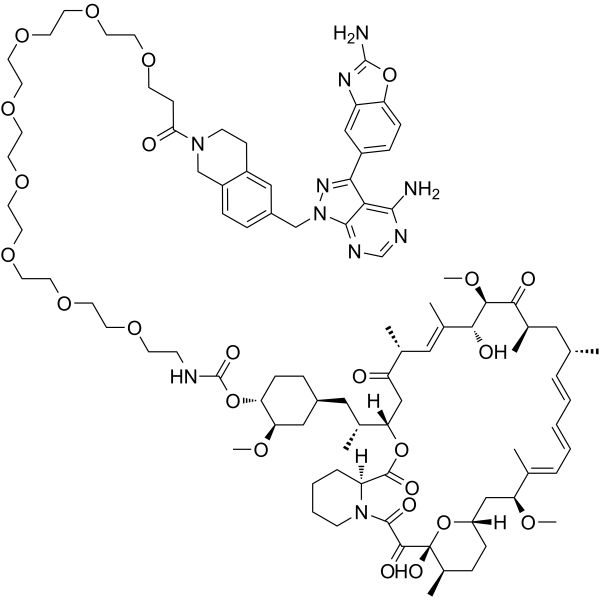
-
GC49690
(3R,5R)-Rosuvastatin (calcium salt)
A potential impurity found in bulk preparations of rosuvastatin
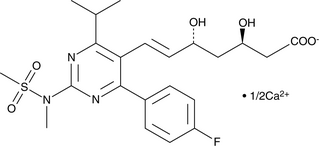
-
GC68317
(3S,5R)-Fluvastatin-d6 sodium

-
GC65358
(4-NH2)-Exatecan
(4-NH2)-Exatecan, ein Topoisomerase-Inhibitor-Derivat, extrahiert aus Patent US20200306243A1, Verbindung A. (4-NH2)-Exatecan kann bei der Synthese von AntikÖrper-Wirkstoff-Konjugaten (ADCs) verwendet werden.

-
GC62710
(5α)-Stigmastane-3,6-dione
(5α)-Stigmastane-3,6-dion ist ein natÜrlich vorkommendes Sterol, das aus FrÜchten von Ailanthus altissima Swingle isoliert werden konnte.

-
GC63685
(6R,7S)-Cefminox sodium heptahydrate
(6R,7S)-Cefminox-Natriumheptahydrat ist ein Isomer von Cefminox-Natriumheptahydrat.
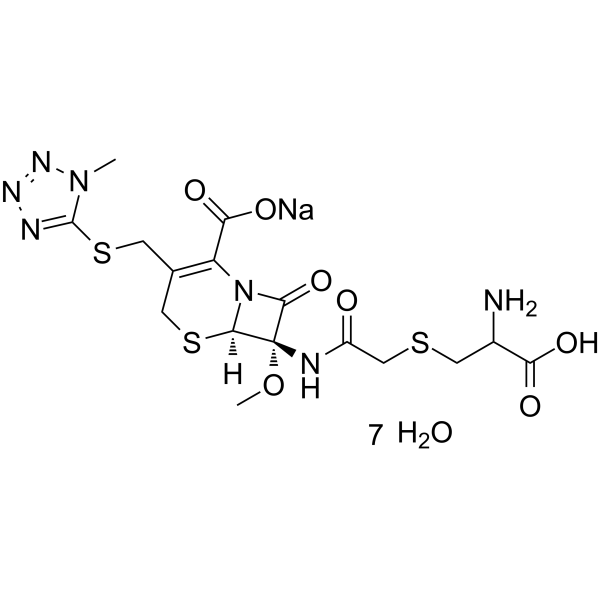
-
GC49519
(6S)-5,6,7,8-tetrahydro-L-Biopterin (sulfate)
A diastereomer of (6R)-5,6,7,8-tetrahydro-L-biopterin

-
GC52100
(Arg)9 (trifluoroacetate salt)
A cationic cell-penetrating peptide

-
GC52442
(D)-PPA 1 (trifluoroacetate salt)
An inhibitor of the PD-1-PD-L1 protein-protein interaction

-
GC15373
(E)-2-Decenoic acid
An unsaturated fatty acid found in royal jelly
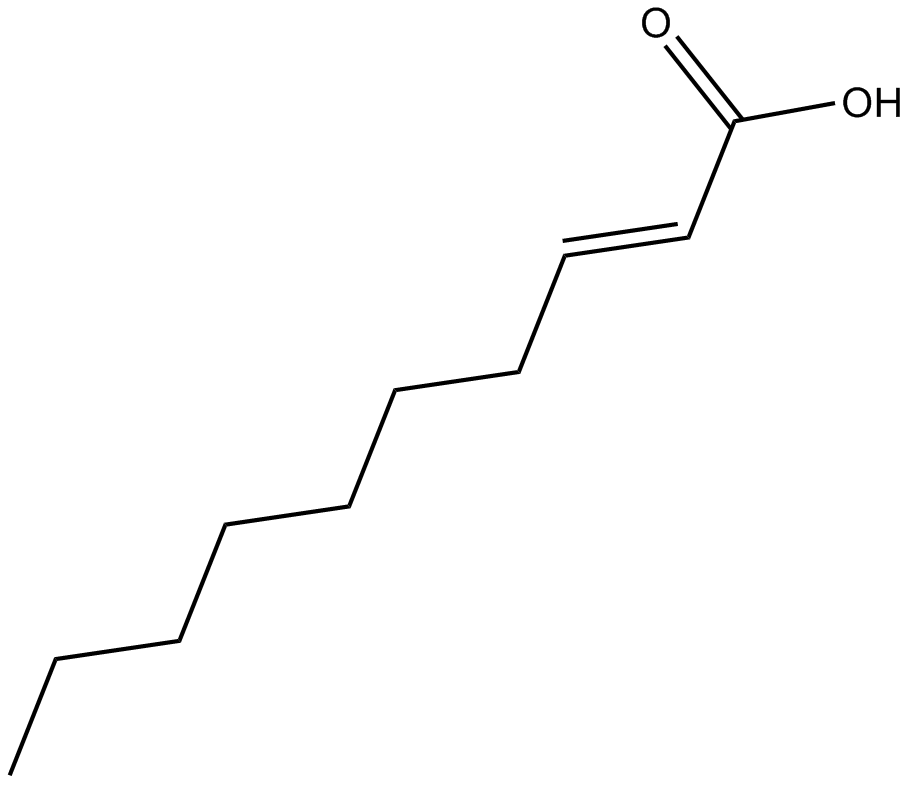
-
GC66255
(E)-3,4,5-Trimethoxycinnamic acid
(E)-3,4,5-TrimethoxyzimtsÄure (TMCA) ist eine mit Multimethoxygruppen substituierte ZimtsÄure. (E)-3,4,5-TrimethoxyzimtsÄure ist ein oral aktiver und potenter GABAA/BZ-Rezeptoragonist. (E)-3,4,5-TrimethoxyzimtsÄure weist eine gÜnstige BindungsaffinitÄt zum 5-HT2C- und 5-HT1A-Rezeptor mit IC50-Werten von 2,5 bzw. 7,6 μM auf. (E)-3,4,5-TrimethoxyzimtsÄure zeigt krampflÖsende und beruhigende AktivitÄt. (E)-3,4,5-TrimethoxyzimtsÄure kann zur Erforschung von Schlaflosigkeit, Kopfschmerzen und Epilepsie eingesetzt werden.

-
GC65239
(E)-3,4-(Methylenedioxy)cinnamic acid
(E)-3,4-(Methylendioxy)zimtsÄure ist ein ZimtsÄurederivat, das aus der Stammrinde von Brombya platynema gewonnen wird.
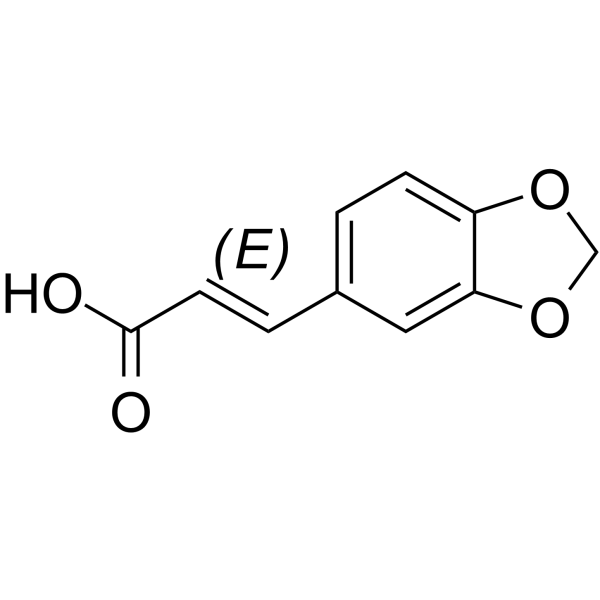
-
GC61668
(E)-3,4-Dimethoxycinnamic acid
(E)-3,4-DimethoxyzimtsÄure ist das weniger aktive Isomer von 3,4-DimethoxyzimtsÄure.
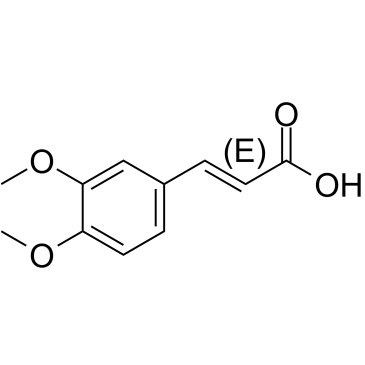
-
GC49003
(E)-Ajoene
A disulfide with diverse biological activities

-
GC62122
(E)-Akt inhibitor-IV
(E)-Akt-Inhibitor-IV ((E)-AKTIV) ist ein PI3K-Akt-Inhibitor mit starker zytotoxischer Wirkung.
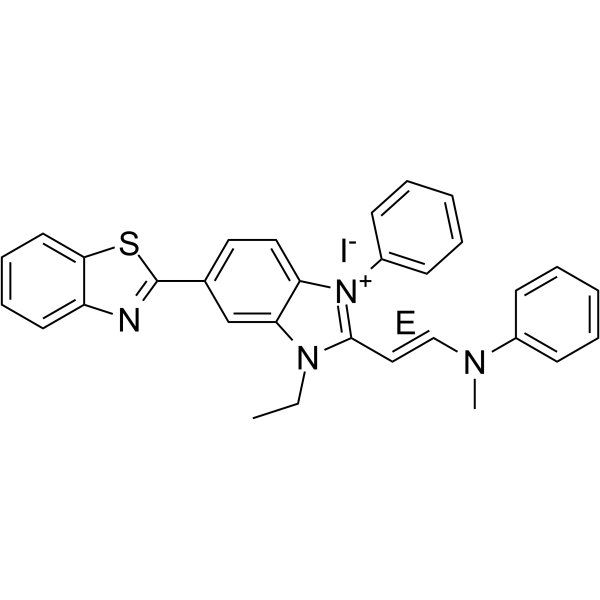
-
GC62733
(E)-Coniferin
(E)-Coniferin ist das Isomer von Coniferin.
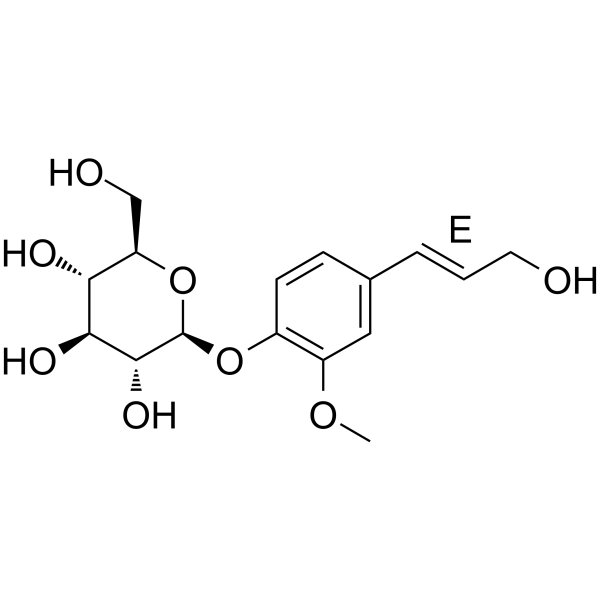
-
GC66371
(E)-Ferulic acid-d3
(E)-FerulasÄure-d3 ((E)-ConiferinsÄure-d3) ist die mit Deuterium markierte (E)-FerulasÄure. (E)-FerulasÄure ist ein Isomer von FerulasÄure, einer aromatischen Verbindung, die in PflanzenzellwÄnden reichlich vorhanden ist. (E)-FerulasÄure verursacht die Phosphorylierung von β-Catenin, was zu einem proteasomalen Abbau von &7#946;-Catenin fÜhrt und die Expression des pro-apoptotischen Faktors Bax erhÖht und die Expression des ÜberlebensfÖrdernden Faktors Survivin verringert. (E)-FerulasÄure zeigt eine starke FÄhigkeit, reaktive Sauerstoffspezies (ROS) zu entfernen und die Lipidperoxidation zu hemmen. (E)-FerulasÄure Übt sowohl Antiproliferations- als auch Antimigrationswirkungen in der menschlichen Lungenkrebszelllinie H1299 aus.
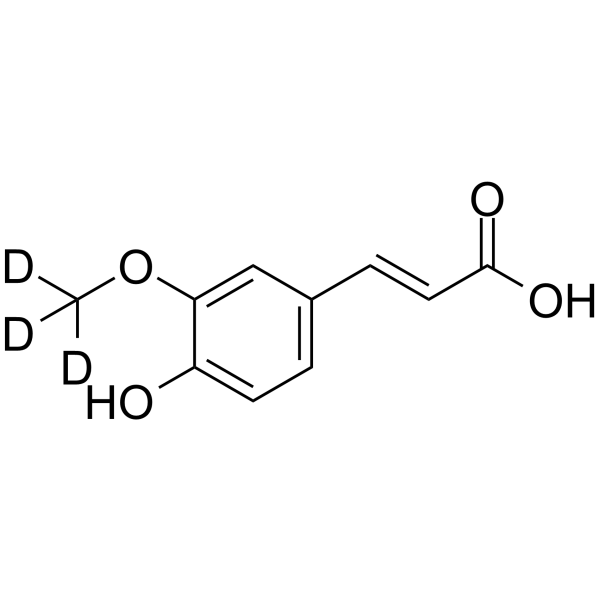
-
GC61437
(E)-Methyl 4-coumarate
(E)-Methyl 4-Coumarat (Methyl 4-hydroxycinnamate), gefunden in mehreren Pflanzen, wie z. B. FrÜhlingszwiebel (Allium cepa) oder Noni (Morinda citrifolia L.
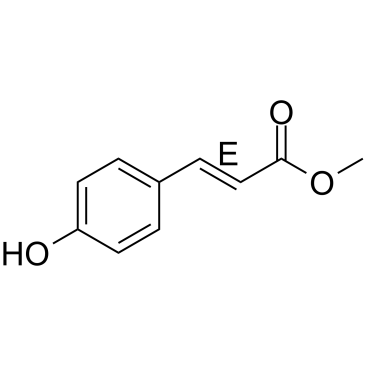
-
GC62734
(E)-Oct-2-enoic acid
(E)-Oct-2-ensÄure ist ein kÖrpereigener Metabolit.

-
GC63903
(E)-Osmundacetone
(E)-Osmundaceton ist das Isomer von Osmundaceton.

-
GC67663
(E)-TCO-PEG4-NHS ester
(E)-TCO-PEG4-NHS-Ester ist ein PEG-basierter PROTAC-Linker, der bei der Synthese von PROTACs verwendet werden kann.
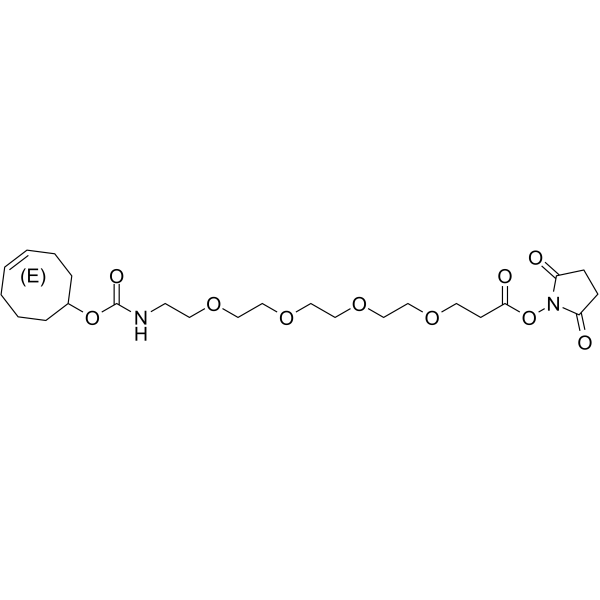
-
GC49189
(E/Z)-4-hydroxy Tamoxifen-d5
An internal standard for the quantification of (E/Z)-4-hydroxy tamoxifen

-
GC61807
(E/Z)-AG490
(E/Z)-AG490 ((E/Z)-Tyrphostin AG490) ist eine racemische Verbindung der Isomere (E)-AG490 und (Z)-AG490. (E)-AG490 ist ein Tyrosinkinase-Inhibitor, der EGFR, Stat-3 und JAK2/3 hemmt.

-
GC25000
(E/Z)-BCI
(E/Z)-BCI (BCI, NSC 150117) is an inhibitor of dual specific phosphatase 1/6 (DUSP1/DUSP6) and mitogen-activated protein kinase with EC50 of 13.3 μM and 8.0 μM for DUSP6 and DUSP1 in cells, respectively. (E)-BCI induces apoptosis via generation of reactive oxygen species (ROS) and activation of intrinsic mitochondrial pathway in H1299 lung cancer cells.

-
GC62407
(E/Z)-Eltrombopag 13C
(E/Z)-Eltrombopag 13C ((E/Z)-SB-497115 13C4) ist ein Mischkomplex aus E-Eltrombopag und Z-Eltrombopag, wobei 13C markiert ist.
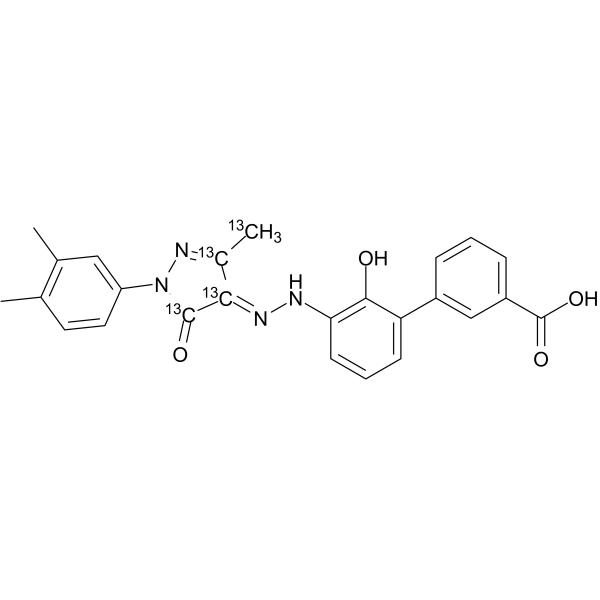
-
GC62735
(E/Z)-GO289
(E/Z)-GO289 ist ein potenter und selektiver Caseinkinase 2 (CK2)-Inhibitor (IC50=7 nM). (E/Z)-GO289 verlÄngert die zirkadiane Periode stark. (E/Z)-GO289 zeigt eine zelltypabhÄngige Hemmung des Wachstums von Krebszellen, die mit der Funktion der Zelluhr korreliert.
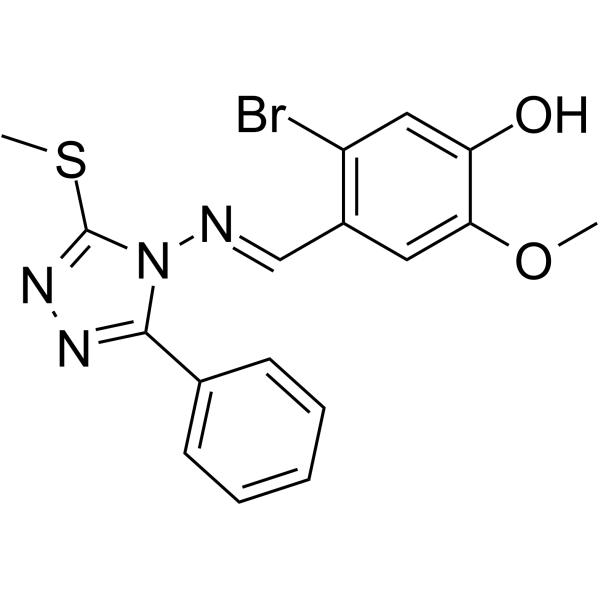
-
GC62736
(E/Z)-GSK-3β inhibitor 1
(E/Z)-GSK-3β Inhibitor 1 ist eine racemische Verbindung von (E)-GSK-3β Inhibitor 1 und (Z)-GSK-3β Inhibitor-1-Isomere.

-
GC61564
(E/Z)-IT-603
(E/Z)-IT-603 ist eine Mischung aus E-IT-603 und Z-IT-603 (IT-603).
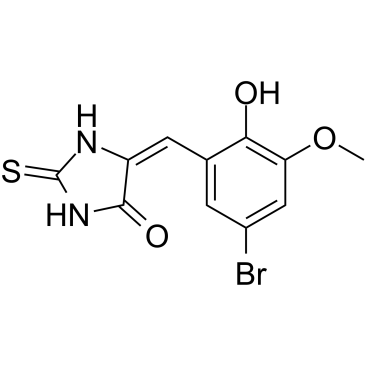
-
GC62560
(E/Z)-Sivopixant
(E/Z)-Sivopixant ((E/Z)-S-600918) ist ein potenter P2X3-Rezeptorantagonist mit einem IC50 von 4 nM.
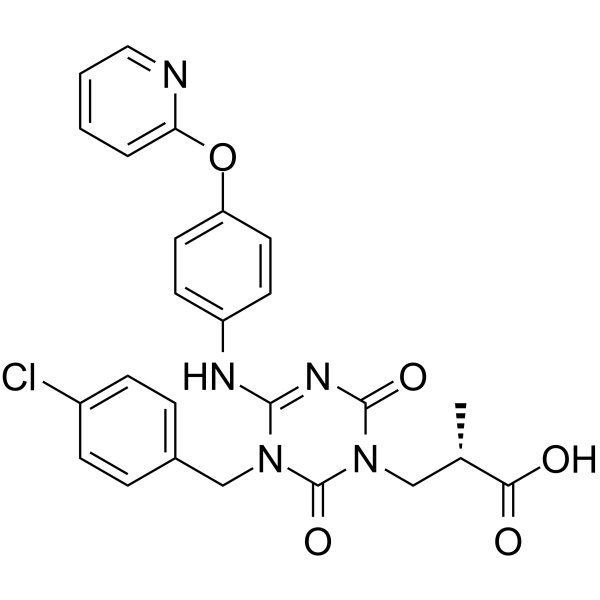
-
GC67476
(E/Z)-Sulindac sulfide
(E/Z)-Sulindac-Sulfid ist ein potenter γ-Secretase-Modulator (GSM). (E/Z)-Sulindac-Sulfid reduziert selektiv die Produktion von Aβ42 zugunsten von kürzerem Aβ Spezies. (E/Z)-Sulindac-Sulfid kann zur Erforschung der Alzheimer-Krankheit verwendet werden.
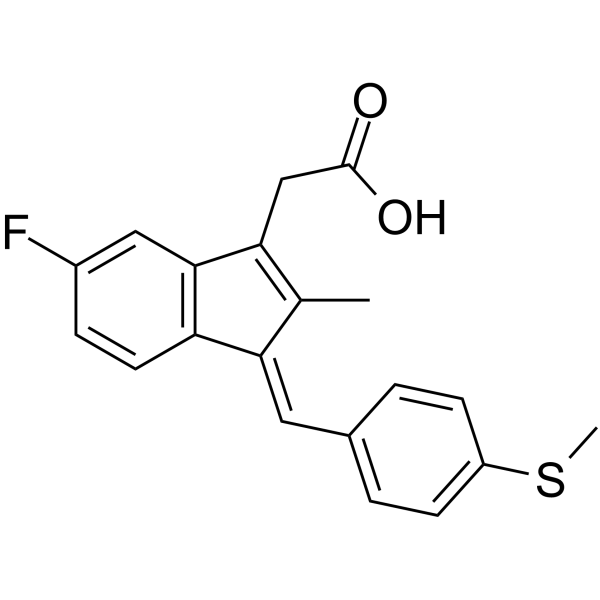
-
GC64657
(E/Z)-ZINC09659342
(E/Z)-ZINC09659342 ist ein Inhibitor der Lbc-RhoA-Wechselwirkung.
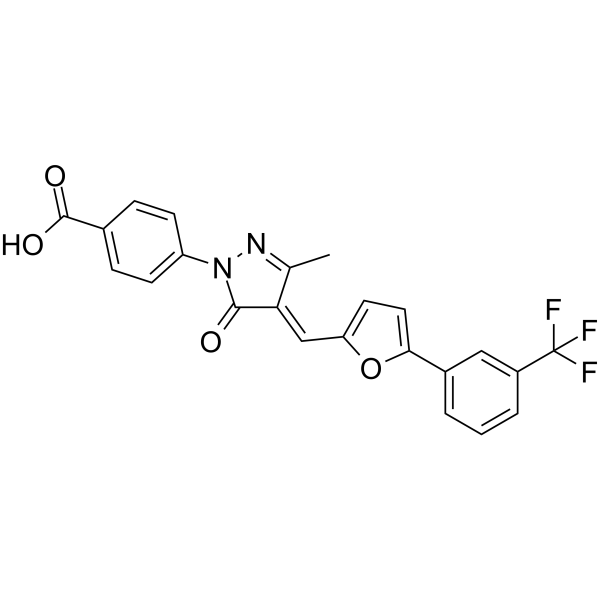
-
GC64429
(E/Z)-Zotiraciclib citrate
(E/Z)-Zotiraciclib-Citrat ist ein potenter CDK2-, JAK2- und FLT3-Inhibitor.
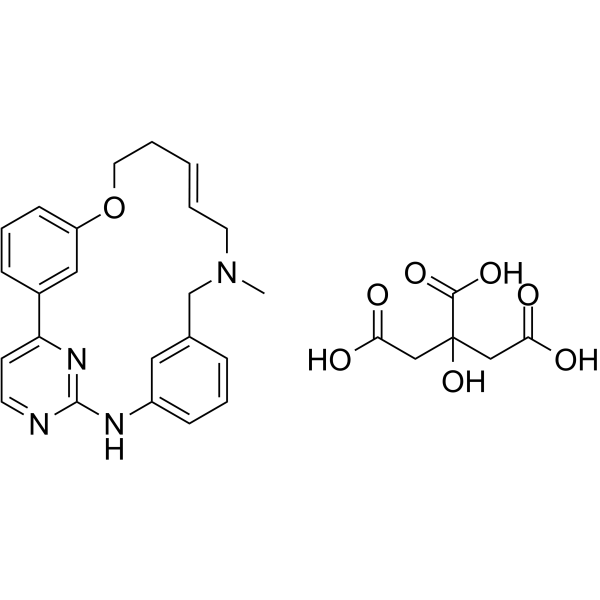
-
GC63864
(E/Z)-Zotiraciclib hydrochloride
(E/Z)-Zotiraciclib ((E/Z)-TG02)-Hydrochlorid ist ein potenter CDK2-, JAK2- und FLT3-Inhibitor.
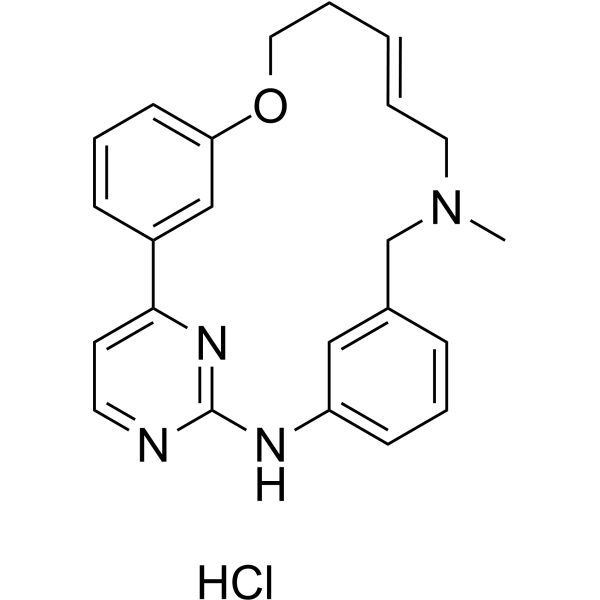
-
GA11210
(H-Cys-OH)2
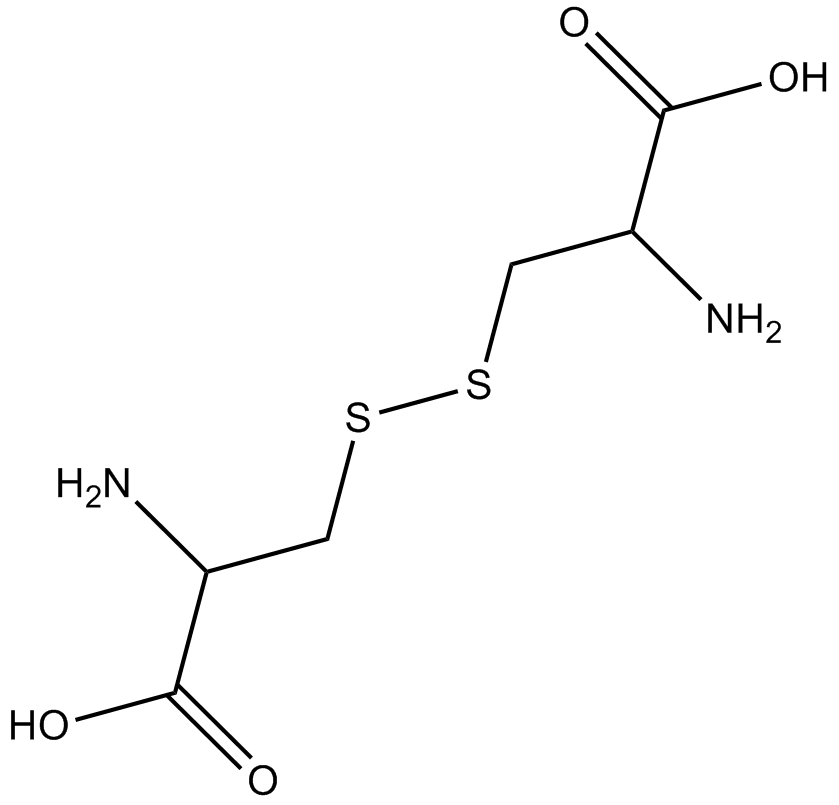
-
GN10783
(R) Ginsenoside Rh2
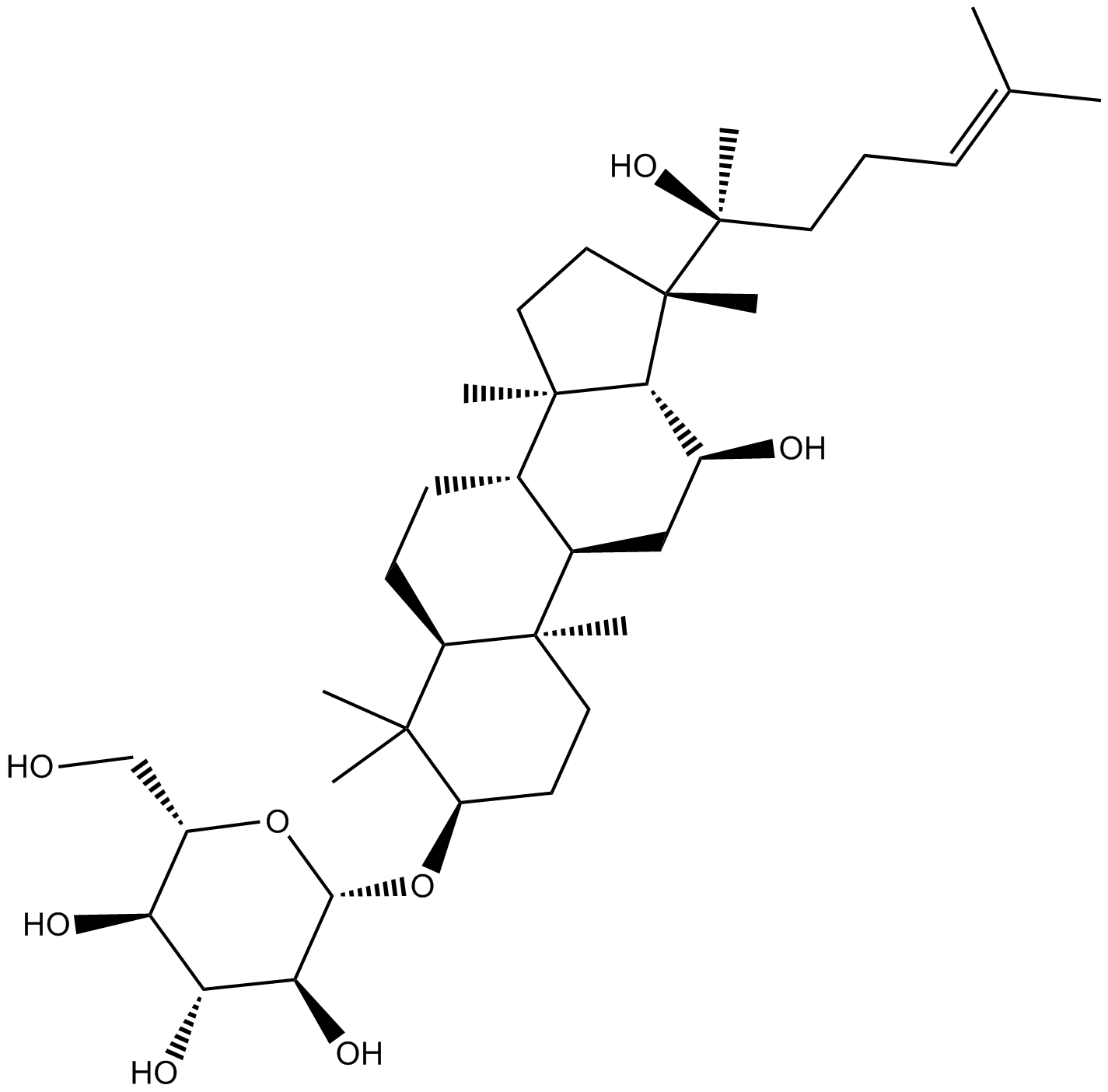
-
GC69834
(R)-(+)-Dimethindene maleate
(R)-(+)-Dimethindene-Maleat ist ein H1-Rezeptor-Blocker mit oralen Aktivitäten und hat antihistaminische Eigenschaften bei Schweinen.
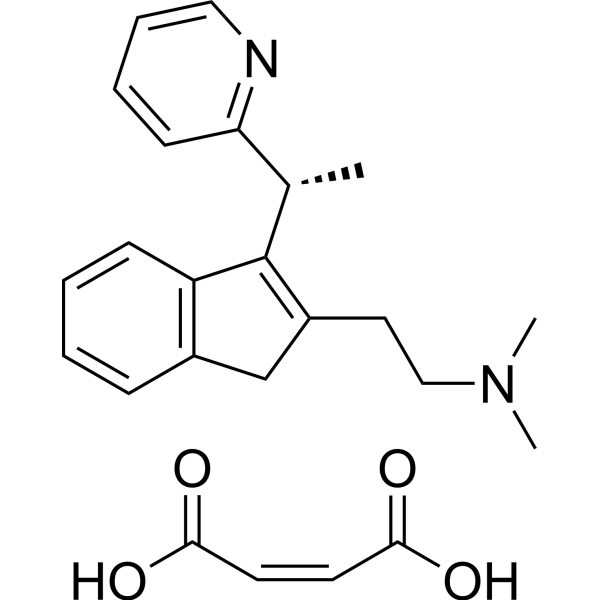
-
GC49167
(R)-(+)-Trityl glycidyl ether
A synthetic precursor

-
GC61425
(R)-(-)-1,2-Propanediol
(R)-(-)-1,2-Propandiol ist ein (R)-Enantiomer von 1,2-Propandiol, das aus Glucose in Escherichia coli produziert wird, die NADH-gebundene Glycerindehydrogenase-Gene exprimieren.
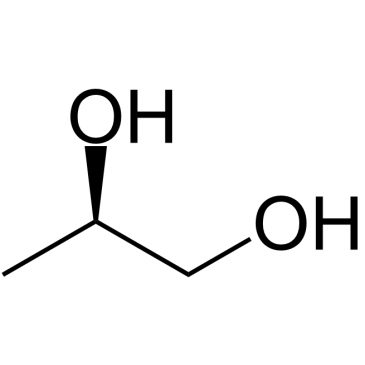
-
GC61694
(R)-(-)-2-Butanol
(R)-(-)-2-Butanol wird von den Weibchen des Weißen Engerlings Dasylepida ishigakiensis freigesetzt, um MÄnnchen anzulocken.
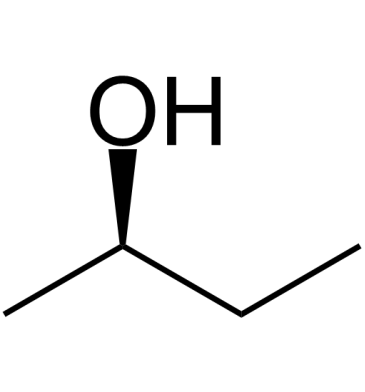
-
GC69823
(R)-(-)-Ibuprofen-d3
(R)-(-)-Ibuprofen-d3 ist das Deuterium-Isotop von (R)-(-)-Ibuprofen. (R)-(-)-Ibuprofen ist das R-Isomer von Ibuprofen, hat keine Wirkung auf COX und kann die Aktivierung von NF-κB hemmen. (R)-(-)-Ibuprofen hat entzündungshemmende Eigenschaften und kann zur Erforschung der Schmerzlinderung eingesetzt werden.
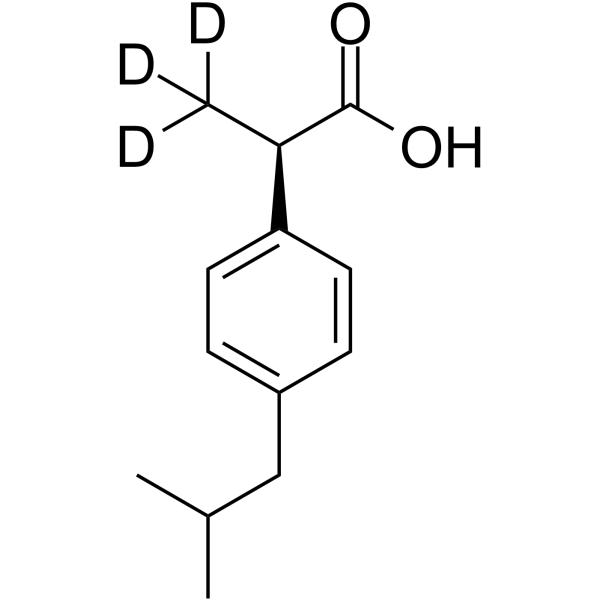
-
GC63791
(R)-(-)-JQ1 Enantiomer
(R)-(-)-JQ1 Enantiomer ist das Stereoisomer von (+)-JQ1. (+)-JQ1 verringert stark die Expression beider BRD4-Zielgene, wÄhrend (R)-(-)-JQ1-Enantiomer keine Wirkung hat.
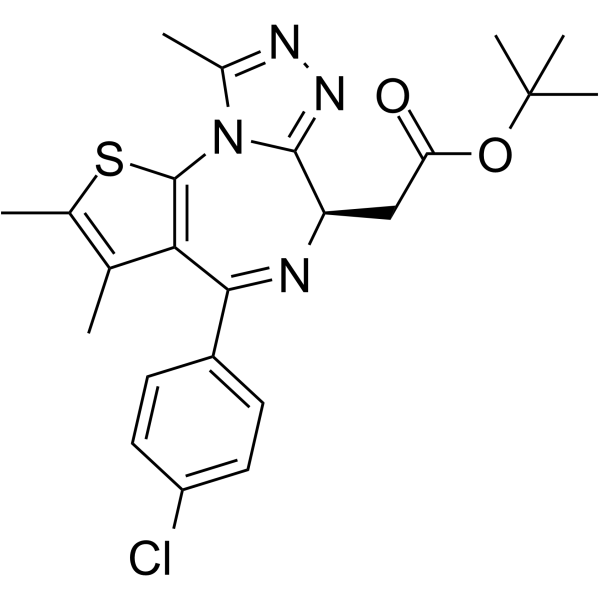
-
GC62737
(R)-(-)-O-Desmethyl Venlafaxine D6

-
GC61759
(R)-3-Hydroxybutanoic acid sodium
(R)-3-HydroxybutansÄure-Natrium ((R)-3-HydroxybuttersÄure) ist ein Metabolit, der aus AcetessigsÄure umgewandelt wird, katalysiert durch 3-Hydroxybutyrat-Dehydrogenase.
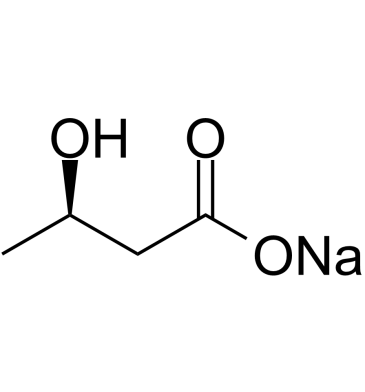
-
GC65610
(R)-5-Hydroxy-1,7-diphenyl-3-heptanone
(R)-5-Hydroxy-1,7-diphenyl-3-heptanon ist ein Diarylheptanoid, das in Alpinia officinarum vorkommt.

-
GC69793
(R)-5-O-Benzoyl-1,2-di-O-isopropylidene-alpha-D-xylofuranose
(R)-5-O-Benzoyl-1,2-di-O-isopropylidene-alpha-D-xylofuranose ist ein Analogon von Purinnukleosiden. Purinnukleosidanaloge haben eine breite antitumorale Aktivität und zielen auf das inerte lymphatische System maligner Tumoren ab. Der Mechanismus der Antikrebswirkung beruht dabei auf der Hemmung der DNA-Synthese sowie der Induktion von Zellapoptose (programmierter Zelltod).

-
GC66904
(R)-8-Azido-2-(Fmoc-amino)octanoic acid
(R)-8-Azido-2-(Fmoc-amino)octansäure ist ein nicht spaltbarer ADC-Linker, der bei der Synthese von Antikörper-Wirkstoff-Konjugaten (ADCs) verwendet wird.
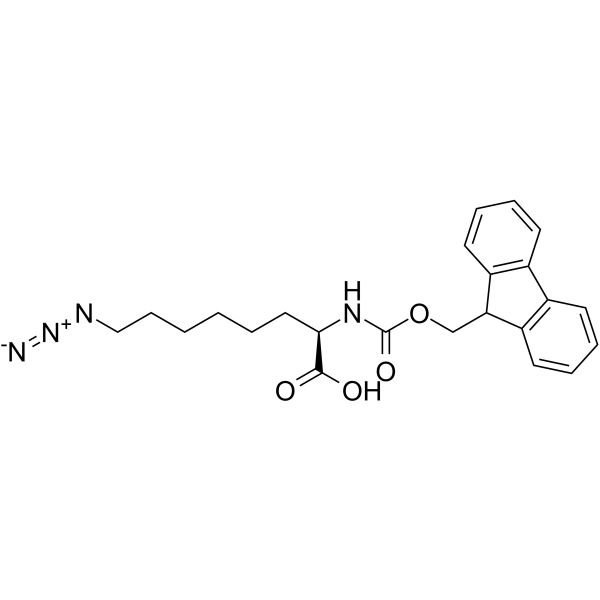
-
GC67688
(R)-Asundexian
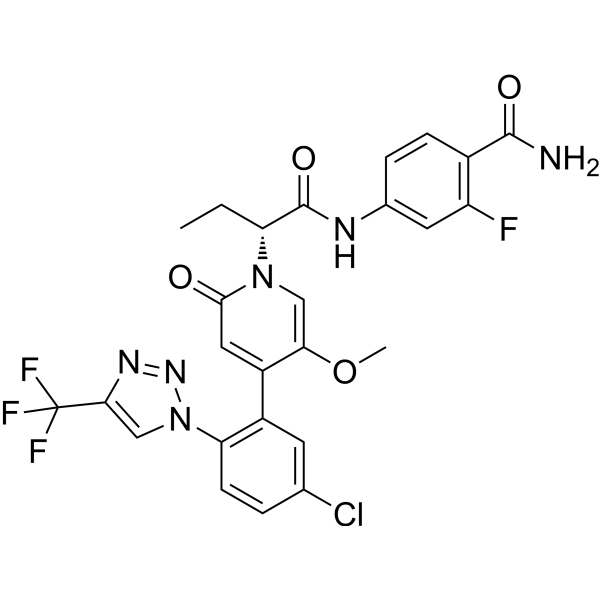
-
GC25001
(R)-Avanafil
R-Avanafil is a strong competitive inhibitor of phosphodiesterase 5 (PDE5) with a demonstrated in vitro IC 50 of 5.2 nM.
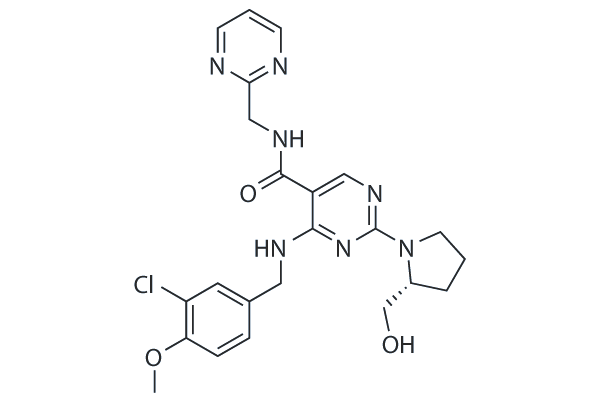
-
GC64091
(R)-Azetidine-2-carboxylic acid
(R)-Azetidin-2-CarbonsÄure ist ein nicht spaltbarer ADC-Linker, der bei der Synthese von AntikÖrper-Wirkstoff-Konjugaten (ADCs) verwendet wird. (R)-Azetidin-2-carbonsÄure ist auch ein PROTAC-Linker auf Alkylkettenbasis, der sein kann

-
GC63781
(R)-BAY-899
(R)-BAY-899 ist das R-Enantiomer von BAY-899.

-
GC63906
(R)-BDP9066
(R)-BDP9066 ist ein potenter Inhibitor der myotonischen Dystrophie-Kinase-verwandten Cdc42-bindenden Kinase (MRCK). (R)-BDP9066 blockiert die Invasion von Krebszellen. (R)-BDP9066 hat das Potenzial fÜr die Erforschung von proliferativen Krankheiten wie Krebs.
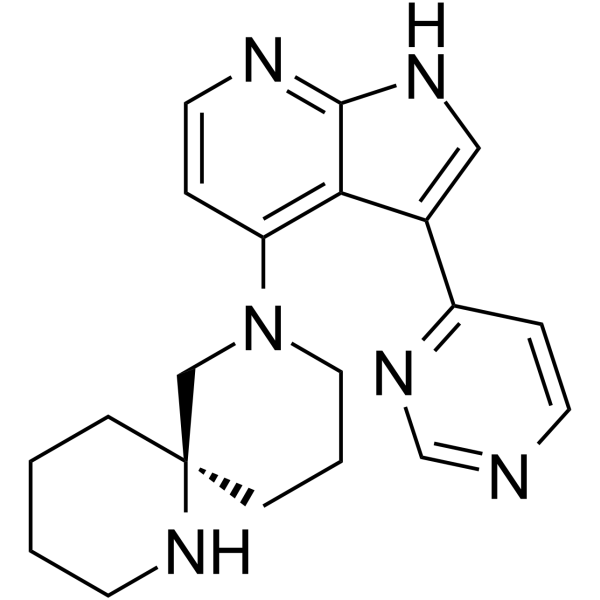
-
GC61491
(R)-Bicalutamide
(R)-Bicalutamid ist das (R)-Enantiomer von Bicalutamid. (R)-Bicalutamid ist ein Antagonist des Androgenrezeptors (AR) mit antineoplastischer AktivitÄt. (R)-Bicalutamid wird in großem Umfang zur Erforschung von Prostatakrebs eingesetzt.
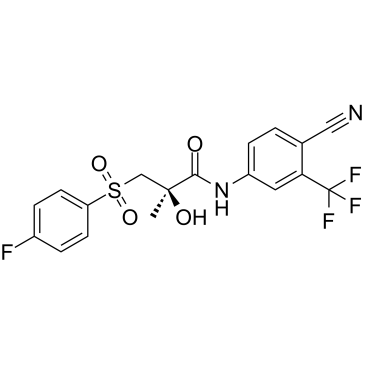
-
GC69805
(R)-Casopitant
(R)-Casopitant ((R)-GW679769) isomer ist ein Isomer von Casopitant. Casopitant ist ein NK(1)-Rezeptorantagonist. Casopitant wird zur Erforschung von Übelkeit und Erbrechen, die durch Chemotherapie verursacht werden, eingesetzt.
